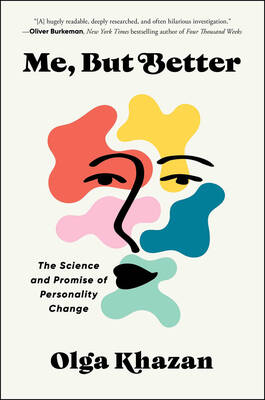Following two recent historical studies of English King Henry V’s improbable military victory on a muddy French farm in 1415, it is not surprising an historical novel would appear to tell the story in a more visual, personable manner.
With Agincourt, prodigious novelist Bernard Cornwell presents a wonderful fictional version of the English army invasion of France and the subsequent showdown battle. Cornwell, already widely known for his medieval historical novels and his Richard Sharpe series, which follows an English soldier through the Napoleonic wars, picked names off the 1415 rosters of soldiers and invented backgrounds, personalities and interrelationships.
Cornwell blends his characters into the fragrant and coarse Middle Ages civilization and rounds out his story with appropriate timeless themes.
English archer Nicholas Hook is Cornwell’s lowborn protagonist in a story balanced with English and French characters.
Hook’s strength and archer training leads him first to Soissons, France, where the French re-conquer the English-occupied town. The atrocities Hook witnesses motivate him as he is recruited into the English army summoned by Henry, who seeks to strengthen his claim to France’s throne.
A generation before Joan of Arc, Hook, too, hears “voices” that guide him through his adventures and the heat of battle. He believes his guardian angels are the martyred saints Crispin and Crispinian.
The climactic Agincourt battle, as noted by William Shakespeare’s play, occurred on the feast day of those saints, Oct. 25, 1415.
Cornwell’s narrative vividly tracks the historical plot as Henry’s army sails to the mouth of the Seine River and begins a prolonged siege on the walled city of Harfleur.
The siege takes longer than expected, and Henry’s army is widely infected and weakened with dysentery before it can march inland for the return trip home via Calais, France.
The French confront Henry’s small, starving 6,000-member force with about 30,000 men. Cornwell’s extended battle narrative articulates the historical explanations of how Henry’s outnumbered army resoundingly defeated the French — the muddy battlefield and the tactical use of the English archers vs the leaderless French forces overweighed by their own armor and weapons.
Cornwell’s narrative is grisly at times, and the author displays a flair for inventing colorful and obscene medieval insults.
Cornwell populates the novel with good and evil characters from both sides. Even Henry is not black and white. A humane and grateful leader, Henry also judges harshly, ordering the execution of a soldier wrongly accused of stealing a religious artifact.
The unfortunate soldier happens to be Hook’s brother, in Cornwell’s story.
The ranks of the Christian priests vary from the purely evil — one English priest loves to rape — to the comforting and empathetic.
The extraordinary Agincourt battle continues to fascinate because it stands more for what happened than why it happened. The English continue to draw national identity from it. The Laurence Olivier movie during World War II, based on Shakespeare’s play, was government-financed for propaganda purposes.
For a three-dimensional view of the event, readers should devote time to consume three works: Cornwell’s novel, Juliet Barker’s 2005 history, also titled Agincourt and, of course, Shakespeare’s history play, King Henry V.

April 14 to April 20 In March 1947, Sising Katadrepan urged the government to drop the “high mountain people” (高山族) designation for Indigenous Taiwanese and refer to them as “Taiwan people” (台灣族). He considered the term derogatory, arguing that it made them sound like animals. The Taiwan Provincial Government agreed to stop using the term, stating that Indigenous Taiwanese suffered all sorts of discrimination and oppression under the Japanese and were forced to live in the mountains as outsiders to society. Now, under the new regime, they would be seen as equals, thus they should be henceforth

Last week, the the National Immigration Agency (NIA) told the legislature that more than 10,000 naturalized Taiwanese citizens from the People’s Republic of China (PRC) risked having their citizenship revoked if they failed to provide proof that they had renounced their Chinese household registration within the next three months. Renunciation is required under the Act Governing Relations Between the People of the Taiwan Area and the Mainland Area (臺灣地區與大陸地區人民關係條例), as amended in 2004, though it was only a legal requirement after 2000. Prior to that, it had been only an administrative requirement since the Nationality Act (國籍法) was established in

Three big changes have transformed the landscape of Taiwan’s local patronage factions: Increasing Democratic Progressive Party (DPP) involvement, rising new factions and the Chinese Nationalist Party’s (KMT) significantly weakened control. GREEN FACTIONS It is said that “south of the Zhuoshui River (濁水溪), there is no blue-green divide,” meaning that from Yunlin County south there is no difference between KMT and DPP politicians. This is not always true, but there is more than a grain of truth to it. Traditionally, DPP factions are viewed as national entities, with their primary function to secure plum positions in the party and government. This is not unusual

The other day, a friend decided to playfully name our individual roles within the group: planner, emotional support, and so on. I was the fault-finder — or, as she put it, “the grumpy teenager” — who points out problems, but doesn’t suggest alternatives. She was only kidding around, but she struck at an insecurity I have: that I’m unacceptably, intolerably negative. My first instinct is to stress-test ideas for potential flaws. This critical tendency serves me well professionally, and feels true to who I am. If I don’t enjoy a film, for example, I don’t swallow my opinion. But I sometimes worry